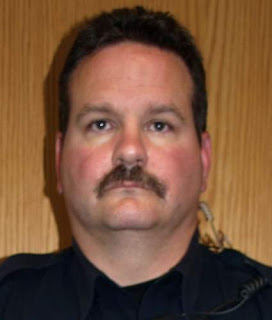Friday, March 26, 2010
Resistance
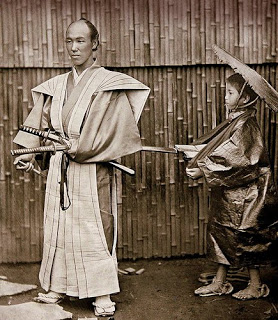
Imperial impunity: Samurai in feudal Japan were invested with Kiri sute-gomen, “authorization to cut and leave” — a literal license to kill. Yet they were actually more accountable than police in contemporary America.
“Time to end this! Enough is enough!” With those words, Officer Troy Meade of the Everett, Washington Police Department fired seven rounds into the body of Niles Meservey, killing him instantly. At the time, Meservey was stupefied by alcohol and sitting behind the wheel of his Corvette. The car was completely boxed in by other vehicles and a chain-link fence. According to several eyewitnesses — including another police officer — the 51-year-old man wasn’t going anywhere, and posed no threat to anyone. Meade shot the drunken man not because of any threat to himself or others; he did it because he was angry and frustrated over Meservey’s non-compliance.
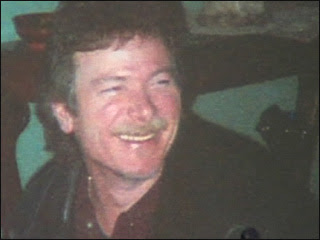
Several people were worried about the prospect of the intoxicated man attempting to drive home when he clearly presented a risk to himself and others. One of them, Trisha Tribble, called 911.
“We’re really concerned about a guy leaving the parking lot of Chuckwagon on Evergreen Way — in a white Corvette, he’s extremely intoxicated,” Tribble told the dispatcher.
Several officers from the Everett Police Department soon arrived; among them were Troy Meade, an 11-year-veteran, and Officer Steven Klocker. Meade arrived at about 11:39 PM; Klocker reached the scene a little less than five minutes later.
By the time Officer Meade arrived, Meservey’s Corvette was bracketed by cars on either side and cut off by a parking lot fence in front of him. Meade pulled up behind Meservey, effectively boxing him in.
Joanne Hancock, who was smoking outside the Chuckwagon Inn when the police arrived, went inside to share the news with others concerned about Meservey. This prompted a small group of people to go outside and watch the arrest.
By the time Klocker arrived to provide “backup,” Meade had spent roughly five minutes trying to convince Meservey to get out of the car. Klocker would later report that Meade’s tone and attitude toward the intoxicated man were “belligerent,” and that he “used language which made him uncomfortable because of the nearby civilians.”
He’s a hero — aren’t they all? Officer Troy Meade, charged with murder in the shooting death of Niles Meservey.
“I don’t know why the f**k I am trying to save your dumb ass,” Meade snarled at Meservey, according to Klocker’s account.
Both Meade and Klocker withdrew their portable electro-shock torture devices (more commonly called Tasers). Meade, who was closest to the driver, shot Meservey with his Taser through the open driver’s side window, inflicting two separate strikes — one five seconds long, the other six seconds’ duration.
“Why in the f**k did you do that?” muttered the drunken man, who — predictably enough — wasn’t inclined to endure any further abuse. He reached for his keys and started the car, but he had nowhere to go: The vehicle lurched over a concrete curb and ran into an unyielding chain-link fence.
Bear in mind, once again, that Meservey was entirely boxed in. It was possible, albeit with some difficulty, for Officer Meade to reach through the window and seize the car keys, rather than escalating the situation by using potentially deadly force. Had he done so, it wouldn’t have been long until Meservey would have succumbed to unconsciousness.
But this would have meant exercising a modicum of patience, and doing some heavy lifting. It was more convenient to shoot the unarmed, helpless drunk. So Meade — according to Klocker’s official account — took up a position near the left rear wheel of the Corvette, pulled his gun, and fired eight shots into the car.
When several other police officers arrived a few minutes later, Meade was seen pacing back and forth near the murder scene.
“I’m out of it,” he blubbered to one of the new arrivals. “I want my Garrity.”
The “Garrity Rule” — adapted from the 1967 Supreme Court ruling Garrity v. New Jersey, which involved a ticket-fixing scandal — is the legal security blanket desperately grasped by police officers who have just committed a serious crime.
Uttering the incantatory word “Garrity” triggers an enhancement of the right against self-incrimination that only the government’s armed enforcers enjoy: Any statements made thereafter can only be used for the purpose of a departmental investigation, not for criminal prosecution.

Klocker, who witnessed the entire incident, pointed out to investigators that when Meservey’s body was pulled from the car, the prongs of Officer Meade’s Taser were still firmly embedded in his shoulder.
“I’m thinking as I’m dragging him … why didn’t we [shock] him again?” Klocker told investigators. If escalation had been “necessary,” Klocker thought, Meade would have used the Taser again, or resorted to pepper spray. “I would never have shot [Meservey]… I don’t think we had reached that level of force yet,” Klocker concluded.
Meservey was neutralized and not long from the comforting embrace of alcohol-induced unconsciousness. Thus it seems obvious to someone not indoctrinated in the state’s view of discretionary killing that there was no reason to use lethal force of any kind in this situation. Using the minimal force necessary to take the keys away from Meservey would have ended any threat the drunk posed to persons and property.
But Meservey had done something more serious than threaten the lives and property of other citizens; he had insulted a police officer through his persistent refusal to submit.
Meade –who was involved in a prior lethal shooting a few years ago — vaulted up the escalation ladder from confrontational and abusive language to lethal violence within a matter of minutes. In doing so he provided a compelling illustration of the fact that every encounter between police and citizens is pregnant with deadly consequences for the latter. Though useful, such a lesson was not worth Meservey’s life.
Meade was originally charged with first-degree manslaughter and placed on paid vacation (aka “administrative leave”).
Unlike a private citizen charged with lethally shooting an unarmed, non-threatening man six times in the back, Meade was set free on his own recognizance. It’s entirely likely that Meade wouldn’t have been indicted if it weren’t for rising public concern over recent police shootings in Everett.
Meade’s attorney defended the murder of Niles Meservey as the result of a “split-second decision,” although such manifestly was not the case. Trisha Tribble, who summoned police to the scene by calling 911, was mortified by the death of Meservey, whom she described as “this drunken guy, [who] was obviously out of his mind.” “
“There was no reason for him to die,” she commented after the slaying.
On March 24, Meade was charged with second-degree murder for the June 10 killing of Meservey. According to his attorney David Allen, the charge is outrageous, since a police officer has essentially an unqualified right to dispense lethal force: “I don’t think an officer who is on duty — who is sworn to uphold the law — should ever be charged with a crime like that.” (Emphasis added.)
Bear in mind that Allen didn’t say a police officer should never commit a crime like that; what he said, in essence, was that a police officer who commits an act of lethal violence should never be charged with a criminal offense. From this perspective, any use of deadly force by an officer is legal by definition.
The claim made by Allen on behalf of Officer Meade is a contemporary American version of what was called kirisute-gomen in feudal Japan. The phrase, roughly translated as “authorization to cut and leave,” referred to the power exercised by Samurai, the Shogun’s armed enforcers, to kill anyone from a lower caste who insulted them.
“Before the Meiji Restoration of 1868, there was a legal structure in place whereby people of the Samurai class or higher could kill anyone of the agrarian class or lower who insulted them,” explained Dr. John Pierre Mertz, a professor of Japanese language at the University of North Carolina, in a phone interview. “The Samurai literally had the power to cut people in two, if they considered the insult to be intolerable. This was part of the culture, and people were very aware of it. In fact, there were manuals that described how a woman could clean and prepare a decapitated head for burial.”
There’s no reliable way of knowing how often this form of summary execution — often referred to as burei uchi, or “striking down the impolite” — was carried out, and what accounts exist tend to be encrusted with accumulated myth and legend.
“Understandably, very few people were willing to stick around and witness incidents of this kind,” Dr. Mertz explained to Pro Libertate. “It’s important to understand as well that the consequences of an act of this kind could be quite severe, since a killing of this kind was taken as evidence of failure on everybody’s part to uphold the societal code. There would be an inquest, and if a Samurai were found to have killed an inferior for no good reason, he would be compelled to apologize — which meant committing ritual suicide through seppuku. So it’s likely that things of this kind happened rarely in feudal Japan.”
Another historical analysis of the Edo period maintains that there was another important restraint on the power of Samurai to execute “impudent” commoners: By that account, a commoner had the absolute, innate right to use lethal force in self-defense against what we would now call police brutality.
A commoner who killed a Samurai in self-defense was not subject to punishment of any kind, since that act would have culled an unsuitable specimen from the warrior caste. A peasant targeted for execution but who escaped with his life was not tracked down and charged with “resisting arrest” or “evasion” of the police”; instead — per this account — the Samurai who needlessly drew his sword was subject to severe punishment for disrupting the peace.
While admitting that the existing records are scanty and ambiguous, Dr. Mertz insists that in the Japanese feudal system, only fellow Samurai or their superiors could seek retribution for criminal violence against those in lower orders. “If an Agrarian person were to lift a finger against the disciplining power, it would be a really serious thing,” Mertz replied when I asked whether a peasant in that system had a right to self-defense. “Once again, it’s difficult to say exactly how the laws were implemented, since there isn’t a lot of detailed reporting on the subject.”
Even if Japanese peasants weren’t permitted to defend themselves, the dreadful penalties inflicted on Samurai who needlessly killed commoners provided a compelling deterrent against the use of unjustified violence by the enforcement caste.
This fact engenders wistful speculation: How frequently would American police resort to unnecessary force if they — in the fashion of the Samurai — confronted the prospect of enduring exactly what they illicitly inflict on others?
The post-1868 Japanese ruling elite was forced to abolish kirisute-gomen because the idea of empowering police to execute citizens for “impudence” was offensive to the Anglo-Saxon view of individual liberty protected by law — the same legal tradition that begat the United States Constitution.
“After Japan was opened to the West, citizens from western nations who lived in colonial enclaves were protected by `extraterritoriality’ agreements secured through British treaties,” Dr. Mertz recounted to Pro Libertate. “Western governments weren’t going to permit their citizens to be struck down in the streets” because they refused to genuflect to Samurai. So the Japanese revoked the enforcement caste’s license to kill.
The sobering and inescapable fact is that in Lee Greenwood’s America, where “at least [we] know [we’re] free,” the police consistently enjoy a far greater scope of official impunity than that granted to the roaming warriors of feudal Japan.
Clear and concise confirmation of that assessment comes by way of some less-than-friendly advice offered by an LAPD officer who writes for National Review under the nom-de-cyber Jack Dunphy.
In any encounter with a cop, a civilian must bear in mind that “the officer is not all that concerned with trying not to offend you,” explained Dunphy. “He is instead concerned with protecting his mortal hide from having holes placed in it where God did not intend. And you, if in asserting your constitutional right to be free from unlawful search and seizure, fail to do as the officer asks, run the risk of having such holes placed in your own.”
During the military occupation of the conquered South, President Andrew Johnson told his subordinates: “Whenever you hear a man prating about the constitution, spot him as a traitor.” Officer Dunphy expands that totalitarian formula: A Mundane who frustrates a member of the Exalted Enforcement Caste by invoking his constitutional rights, he should be shot on sight in the interest of “officer safety” — the highest priority and most sacred responsibility of the heroic Paladins of Public Order.
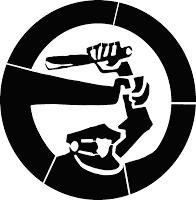
Until very recently, the laws of most states recognized the principle stated by the U.S. Supreme Court in its 1943 ruling United States v. Di Re: “One has an undoubted right to resist unlawful arrest, and courts will uphold the right of resistance in proper cases.”
The right to resist unjustified police violence — whether it takes the form of kidnapping (the proper description of an unlawful arrest) or physical assault — is still legally recognized in a dozen states. It has been upheld in recent court decisions, most recently by Florida Circuit Court Judge John DeFuria, who ruled that homeowner John Coffin “had a right to resist” when he and his wife were violently attacked in their home by two sheriff’s deputies. Nonetheless, arrests for the non-crime of “resisting arrest” are quite common. In fact, a study conducted last year by the San Jose Mercury News found that an average of three people a day were arrested for that supposed offense in that city.
Furthermore, of the 206 court cases in which “resisting arrest” was the most serious “offense,” 145 — or seventy percent — of the cases “involved the use of force by officers.” Most importantly, not a single one of the 117 complaints of unnecessary force filed with the police department’s internal review board was “sustained.”
Constitutional and statutory guarantees of the right to resist state-inflicted violence are otiose when those designated the “disciplining power” refuse to police themselves, and the productive class has neither the means nor the will to protect itself. This is why we’ve arrived at a point where police can kill innocent citizens with impunity, and yet the slightest physical contact by a citizen can be prosecuted as “battery on an officer,” and a citizen wielding a flyswatter can be charged with “felonious assault” on a policeman.
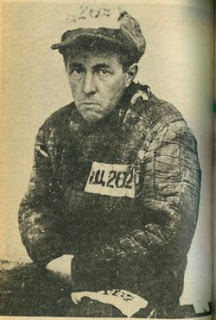
Portrait of a literary hero as “Zek”: Alexander Solzhenitsyn during his incarceration in the Soviet gulag (left and below, right).
Without a right to resist, we have a duty to submit — and submission to unlawful police violence frequently results in serious injury, sexual assault, and death.
Wherever possible, resistance should be peaceful. Where violence is used it must be strictly governed by the non-aggression principle. Prudence has its proper claims to make as well: The right to resist unlawful violence may not be exercised in every appropriate circumstance, but it must be recognized as valid in all cases.
In the first chapter of The Gulag Archipelago, Solzhenitsyn offers a detailed reflection on the “cataclysm” that results when one hears an armed stranger pronounce the dreadful phrase, “You are under arrest.”
“At what exact point … should one resist?” he wrote. “When one’s belt is taken away? When one is ordered to face into a corner? When one crosses the threshold of one’s home?”
By the Brezhnev era, after tens of millions had been exterminated in the gulag, many Russians lamented that “submissiveness had softened our brains to such a degree” that resistance was no longer possible. All of this could have been avoided, Solzhenitsyn contended, if resistance had begun “at the moment of arrest itself.”
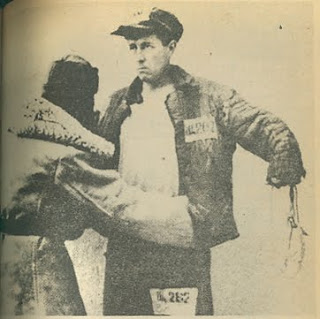
“And how we burned in the camps later, thinking: What would things have been like if every Security operative, when he went out at night to make an arrest, had been uncertain whether he would return alive?” mused Solzhenitsyn in a famous footnote to that chapter. “Or, if during the periods of mass arrests, as for example in Leningrad, where they arrested a quarter of the entire city, people had not simply sat there in their lairs, paling with terror at every bang on the downstairs door and at every step on the staircase, but had understood that they had nothing left to lose and had boldly set up an ambush of half a dozen people with axes, hammers, pokers, or whatever else was at hand?…. The [Security] Organs would very quickly have suffered a shortage of officers … and, notwithstanding all of Stalin’s thirst, the cursed machine would have ground to a halt!”
“If … if …. We didn’t love freedom enough,” he concluded. “We purely and simply deserved everything that happened afterward.”
Solzenitsyn’s words will be a suitable epitaph for American liberty if we do not restore, and practice, the right to resist.
(This essay is an updated adaptation of the presentation I was scheduled to make at last week’s Liberty Forum in New Hampshire.)

Dum spiro, pugno!
Content retrieved from: http://freedominourtime.blogspot.com/2010/03/resistance.html.


